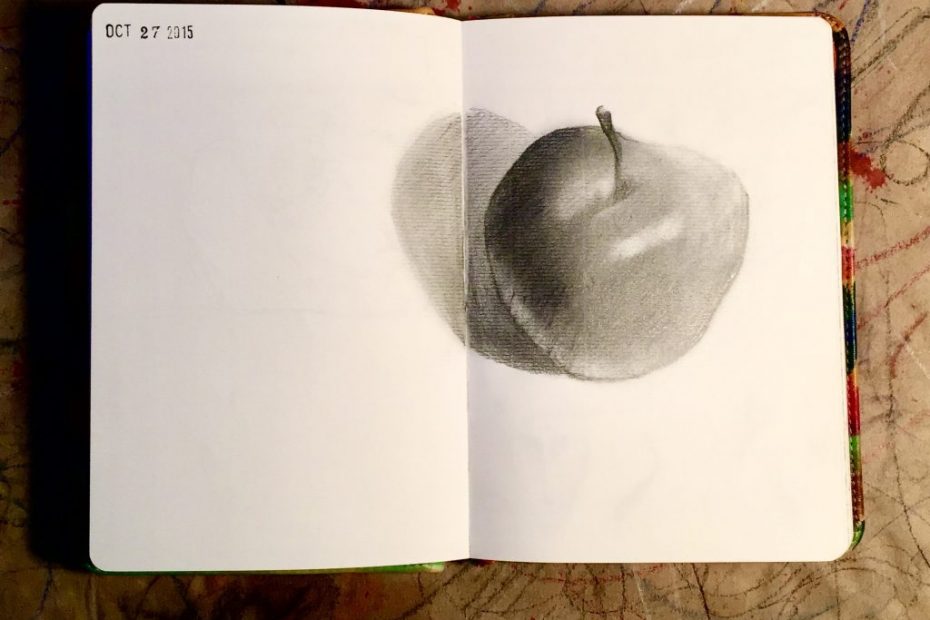“I can’t even draw a straight line.”
While many make this claim, it’s so untrue. Most of us started drawing one way or another with our first box of crayons. Our innocent and joyful scrawls reflected a primal energy that Picasso once confessed took him a lifetime to achieve.
My childhood memories of drawing are vivid. I recall scribbling away using crayons or pencils on the kind of white cardboard that comes with a freshly laundered shirt, drawing fantasy characters, or a simple bowl of fruit. To this day, I have my shirts washed and folded to ensure that a supply of this cardboard is always handy.


As an artist, drawing is my most valuable skill. This skill and an interest in its career potential inspired me to become a graphic designer. While drawing fundamentals were central to my design training, this is less customary today, as most design schools emphasize the mastery of digital programs. Even so, when I review a student portfolio, I’ll always ask if I can see some drawings, as they quickly reveal much about a designer’s conceptual process. I believe drawing is the fastest way to express ideas, and I know plenty of colleagues who take advantage of this approach. Some of my favorite designers, such as Christoph Niemann, Brian Rea, and Max Kisman, deftly use drawing to great effect.
Years ago, I designed a poster commemorating the centennial of Frida Kahlo and Diego Rivera’s artistic collaboration. I began with a simple pencil sketch and then decided to finalize the image in Adobe Illustrator. As this was the first time I used this program, the experience was painfully slow, but ultimately produced the desired result.


To keep my drawing chops sharp, I devote a lot of time to sketching the figure. I frequently draw a model with a group of artists in a mediative atmosphere where the loudest sound is of charcoal scratching paper. For ten years, I hosted a monthly drawing salon for our designers and guests at the Carbone Smolan Agency in a creative trade of pixels for pastels.


Drawing the human body never gets easier, but it is an excellent lesson in visual perception. Scale, balance, proportion, symmetry, light, shadow, and structural dynamics may add little to one’s knowledge of AI or the metaverse, but still play an essential role in good design. As soon the model is in position, I immediately feel connected to thousands of years of artistic tradition. These drawing sessions are like time travel.


I had no drawing mentors when I was young, but in retrospect, early exposure to fine art had its impact. At home, we had a large Bible with stunning etched illustrations of stories from the Old and New Testaments. I liked the dramatic images, such as Samson destroying a temple, the battle of David and Goliath, and Daniel in a den of lions. In a college art history class, I later learned that these drawings were by the 19th-century French illustrator Gustave Doré. My early fascination with his work confirmed that drawing would eventually become my religion of choice.
I always bring my journal when visiting a museum or gallery, and will take my time drawing from the work I see. I alternate between quick sketches (memory triggers) and rendered drawings. As I trace the lines of a still-life or portrait, I feel like I’m peeking into the creative process that made it possible, like I’m conversing with the artist.


If you like to doodle, there’s good news. Psychologists have found that drawing or doodling while listening can enhance understanding. For example, many past presidents, including JFK and FDR, often doodled during Oval Office meetings— not as a distraction, but to help them pay attention.
I have sketched broadcast journalists and their guests while watching the nightly news, for years and I have found that it improves my comprehension of the discussion. I’ve been a fan of the PBS NewsHour for its award-winning reporting, and the relaxed pace of conversation and camera editing allows me to capture the likenesses of talking heads.


Drawing is intimidating to most people, but with some encouragement and practice, anyone can learn to draw at any age. I consider drawing to be a life skill worth pursuing because it’s another form of seeing, and contributes to enjoying the world in countless ways.
If you can draw, consider it a gift, and never, ever take it for granted.
Next month: Have Sketchbook Will Travel
Ken Carbone is an artist, designer, and Co-Founder of the Carbone Smolan Agency a design company he built with Leslie Smolan over 40 years ago. He is the author of two books, including Dialog: What Makes a Great Design Partnership, a visiting lecturer at numerous design schools and TED X speaker. A recipient of the 2012 AIGA medal, he is currently a Senior Advisor to the Chicago-based strategic branding firm, 50,000feet.
